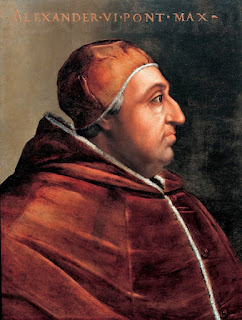Vincenzo Gemito - sculptor
Neapolitan who preserved figures from local street life
Vincenzo Gemito, one of the sculptors responsible for eight statues of former kings that adorn the western façade of the Royal Palace in Naples, was born on this day in 1852. The statues are in niches along the side of the palace that fronts on to the Piazza del Plebiscito, displayed in chronological order beginning with Roger the Norman, also known as Roger II of Sicily, who ruled in the 12th century, and ends with Vittorio Emanuele II, who was on the throne when his kingdom became part of the united Italy in 1861. Gemito sculpted the fifth statue in the sequence, that of Charles V, who was the Holy Roman Emperor from 1519 to 1556 and, by virtue of being king of Spain from 1516 to 1556, also the king of Naples. Gemito was known for the outstanding realism in his work, as can be seen in his sculpture Il giocatore di carte – The Card Player - which he created when he was only 16. Born in Naples, Gemito’s first steps in life were difficult ones. The son of a poor woodcutter, he was taken by his mother the day after his birth to the orphanage attached to the Basilica of Santissima Annunziata Maggiore in the centre of the city and left on the steps. Read more…
_______________________________________
Andrea del Sarto – painter
The brief career of an artist ‘senza errori’
Renaissance artist Andrea del Sarto was born Andrea d’Agnolo di Francesco di Luca di Paolo del Migliore on this day in 1486 in Florence. He had a brilliant career but died at the age of 43 during an outbreak of plague and afterwards his achievements were eclipsed by the talents of Da Vinci, Michelangelo and Raphael. Andrea’s father, Agnolo, was a tailor and therefore the child became known as del Sarto, meaning son of the tailor. As a young boy del Sarto was apprenticed to a goldsmith and then a woodcarver before being sent to learn to be an artist. He decided to open a joint studio with an older friend, Franciabigio, and from 1509 onwards they were employed to paint a series of frescoes at Basilica della Santissima Annunziata in Florence. Del Sarto also painted a Procession of the Magi, in which he included a self-portrait, and a Nativity of the Virgin for the entrance to the church. He married Lucrezia del Fede, a widow, in 1512 and often used her as a model for his paintings of the Madonna. After spending a year as court painter to Francis I of France in 1518, del Sarto returned home to his wife and was offered a major commission by the Medici family. Read more…
______________________________________
St Clare of Assisi
Birth of the founder of the Poor Clares
St Clare was born on this day in 1194 in Assisi as Chiara Offreduccio, the beautiful daughter of a Count. As a young girl Clare was extremely devout and at the age of 18 she was inspired by hearing Francis of Assisi preach and went to see him to ask for help to live her life according to the Gospel. In 1212, Clare left her father’s home and went to the chapel of Porziuncola to meet Francis. Her hair was cut off and she was given a plain robe and veil in exchange for her rich gown. Clare joined a convent of Benedictine nuns and when her father tracked her down refused to leave it to return home. Francis sent her to another monastery, where she was later joined by her sister. Over the years other women came to be with them who also wanted to serve Jesus and live with no money. They became known as the Poor Ladies of San Damiano because of the austere lifestyle they lived. Clare took care of St Francis when he became old and after his death continued to lead her Order of Poor Women in the Franciscan tradition, which later became known as the Order of St Clare, also often referred to as The Poor Clares. Read more…




.jpg)


.jpg)



.jpg)














.jpg)